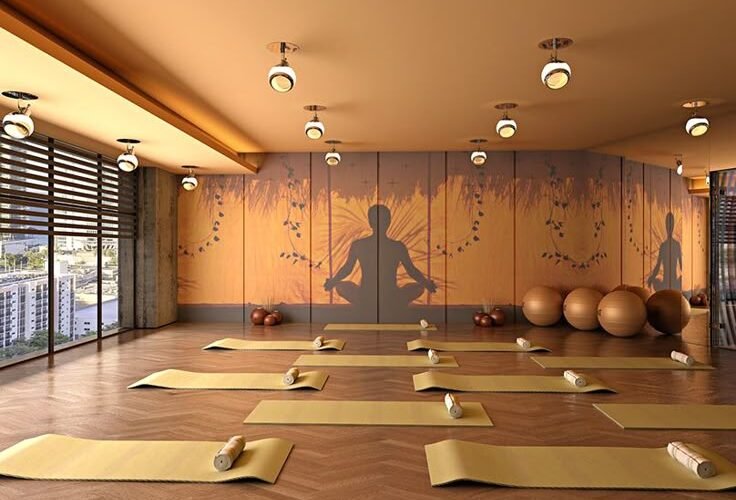Best Yoga Mats for Comfort & Durability

Yoga mats play a crucial role in ensuring comfort, stability, and support during practice. Choosing the right mat involves evaluating thickness, material, texture, grip, and durability. Yogis require a mat that cushions joints, prevents slipping, and withstands frequent use.
Key Factors to Consider in a Yoga Mat
- Thickness and Cushioning
Mat thickness impacts comfort and stability. Standard yoga mats measure about 4-5mm thick, offering a balance of support and connection to the floor. Thicker mats (6mm or more) provide extra cushioning, ideal for those with sensitive joints. Travel mats, designed for portability, range from 1-3mm but offer less padding. - Material and Durability
The choice of material affects longevity, grip, and environmental impact. PVC mats last the longest but contain non-eco-friendly chemicals. Natural rubber, TPE (thermoplastic elastomer), and cork offer sustainable alternatives with excellent durability. Some high-end yoga mats use closed-cell construction, preventing sweat absorption and increasing lifespan. - Texture and Grip
A mat’s surface texture influences traction. Smooth mats provide a soft feel but may become slippery with sweat. Textured mats or those made from natural rubber enhance grip, preventing hands and feet from slipping during practice. Some manufacturers add moisture-wicking coatings for improved performance. - Portability and Weight
Travel-friendly mats weigh less and roll up easily, making them ideal for yogis on the go. Heavier mats provide more stability but require effort when carrying them to studios or outdoor sessions. Some brands offer carrying straps or bags to increase convenience.
Top Yoga Mats for Comfort & Durability
1. Liforme Yoga Mat
Pros:
- Superior grip with eco-polyurethane top layer
- Alignment markers for better posture guidance
- Thick, cushioned base for joint support
Cons:
- Heavier than standard mats
- Higher price compared to competitors
Liforme’s premium design enhances grip, comfort, and durability. The alignment markers help beginners maintain proper positioning, and the dense rubber base absorbs impact. Dedicated practitioners appreciate its long lifespan and stability.
2. Manduka PRO Yoga Mat
Pros:
- High-density cushioning for superior comfort
- Extremely durable, lasting over a decade with proper care
- Closed-cell surface repels moisture and sweat
Cons:
- Requires break-in period to achieve optimal grip
- Heavier than most mats
Manduka PRO remains a top choice among advanced yogis and instructors. Its ultra-dense padding provides unmatched support, making it ideal for longer sessions. Over time, the surface improves grip, ensuring excellent traction.
3. Jade Yoga Harmony Mat
Pros:
- Made from natural rubber, offering strong eco-friendly credentials
- Superior grip, even in sweaty conditions
- Provides firm yet cushioned support
Cons:
- Absorbs moisture, requiring frequent cleaning
- Slight rubber odor initially
Jade Yoga’s Harmony Mat blends comfort and sustainability. Its natural rubber composition delivers excellent grip and moderate cushioning. Yogis focused on sustainability appreciate Jade Yoga’s commitment to planting a tree for every mat sold.
4. Lululemon The Reversible Mat 5mm
Pros:
- Dual-textured surface for varied practice needs
- Polyurethane top absorbs moisture for a non-slip grip
- Ample cushioning without excessive weight
Cons:
- Requires regular cleaning to maintain grip
- Can show signs of wear after intense use
Lululemon’s Reversible Mat features a smooth top for sweaty sessions and a textured base for additional grip. Its balanced cushioning supports all styles, from restorative to power yoga. The antimicrobial treatment helps prevent bacteria buildup.
5. Gaiam Premium Print Yoga Mat
Pros:
- Budget-friendly option with various design choices
- Lightweight and easy to carry
- Non-toxic materials ensure safety
Cons:
- Less durable compared to premium mats
- May lose grip over time with heavy sweating
Gaiam’s Premium Print Mat offers affordability without sacrificing quality. Beginners and casual yogis enjoy its soft cushioning and stylish prints. Though it lacks the longevity of high-end mats, it serves as a reliable entry-level choice.
Best Yoga Mat for Comfort
Yogis prioritizing comfort benefit from the Manduka PRO and Liforme Yoga Mat. Both options provide dense cushioning that protects joints and enhances overall stability. Manduka’s high-density foam absorbs impact, while Liforme’s eco-polyurethane surface delivers excellent grip and alignment assistance.
Best Yoga Mat for Durability
Durability ensures a long-lasting investment. The Manduka PRO withstands years of frequent use without wearing down. Its closed-cell surface prevents sweat absorption, maintaining hygiene over time. Jade Yoga Harmony Mat also offers durability, thanks to its natural rubber construction.
Best Yoga Mat for Hot Yoga
Hot yoga requires a mat with superior moisture absorption and grip. Lululemon’s Reversible Mat provides a polyurethane top that wicks sweat efficiently. Jade Yoga Harmony’s natural rubber surface remains sticky even when wet, reducing slip risks during intense sessions.
Best Yoga Mat for Travel
Travel mats balance lightweight design with adequate support. The Manduka eKO Superlite offers excellent portability while maintaining grip. Its foldable structure fits into backpacks easily, making it ideal for yogis on the move. Gaiam’s travel-friendly mats also provide a cost-effective alternative.
How to Maintain a Yoga Mat for Longevity
- Regular Cleaning
Wipe mats after each session with a damp cloth and mild detergent. For deep cleaning, soak the mat in water and vinegar or use specialized yoga mat sprays. - Proper Storage
Avoid direct sunlight, as UV rays degrade rubber and foam materials. Store mats in a cool, dry place, rolling them loosely to prevent creases. - Use a Yoga Towel for Sweat Management
A yoga towel absorbs sweat, reducing wear and tear on the mat. This practice extends the mat’s lifespan and maintains hygiene.
Future Trends in Yoga Mats
1. Sustainable Materials
Brands continue innovating with biodegradable and recycled materials. Cork, organic cotton, and plant-based foams gain popularity, reducing environmental impact.
2. Smart Yoga Mats
Technology-integrated mats track posture, balance, and alignment. Some models sync with mobile apps, offering guided sessions based on movement analysis.
3. Antimicrobial Coatings
More manufacturers introduce mats with antimicrobial properties to prevent bacteria and odor buildup, enhancing hygiene for frequent users.
Conclusion
Finding the best yoga mat depends on personal needs, whether prioritizing comfort, durability, grip, or sustainability. High-quality options like the Manduka PRO and Liforme Yoga Mat provide lasting support for serious practitioners, while budget-friendly choices like the Gaiam Premium Print Mat cater to beginners. With proper care, a reliable yoga mat enhances practice and ensures years of use.













